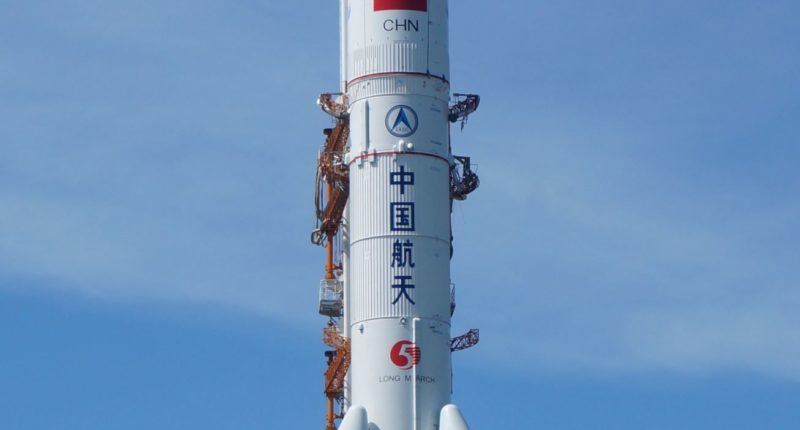How would you react if you were told that an out-of-control rocket is hurtling towards the earth at full speed, and might most likely end up crashing onto the surface? Panicked, perhaps. Well, sorry to tell you but this is in fact true. The debris from a Chinese rocket, a 110-feet tall Long March 5B, to be precise, is all set to re-enter the earth’s atmosphere today, following which, it might end up crash landing on the surface.
Experts, however, say that there is absolutely no reason to panic, since this is not the first time such an incidence has taken place. The rocket went up into space a few days earlier from China’s Hainan Island, on April 29, when it was used to ferry the first unit of three, to CSS, the Chinese Space Station. Its design is such that it does not support any maneuvering or control of any type, and so, it has since been in an irregular trajectory, and seems to be out of control, as reported by the Headquarters of the US Defence, Pentagon. The US Defence had announced that it has been “keeping a close eye” on the movement of the vehicle. Secretary Lloyd Austin had also said that they had “no plans whatsoever to shoot and take down the rocket.”
The US Space Command has issued a report which states the rocket, which weighs a whopping 22 tonnes, will be entering the atmosphere on Saturday, and will most likely stage a crash landing into the ocean, and so, poses relatively low risk to human life and property. This was exemplified by the words of Dan Oltrogge, founder of the Space Safety Coalition, who says, “Much of the earth is covered in water, so there’s almost no risk…The likelihood of any human being getting hit is quite low. It’s extremely low, let’s call it.” The report also reads, “its exact entry point into the Earth’s atmosphere cannot be pinpointed until within hours of its reentry”.
As of a few hours ago, the rocket was reportedly in orbit around the earth, in an unusual diagonal trajectory at an inclination of 41.5 degrees from the equator. This means that it will directly pass overhead a number of countries and cities, including New York, New Zealand, Chile, and Madrid. While the risk to life has been ruled out to be low by the report, China will be held responsible by the US for making any compensations in case some damage does occur. However, Chinese experts are claiming non-stop that no damage is likely to occur. The Aerospace Knowledge Magazine said through its Chirf Editor Wang Yanan, “Most of the debris will burn up during re-entry … leaving only a very small portion that may fall to the ground, which will potentially land on areas away from human activities or in the ocean.”
This will not be the first time a Chinese space debris has hurtled towards the earth, as a similar thing had happened three years ago, in 2018. Back then, debris from the Tiangong-1, the country’s first prototype space station, had entered the atmosphere in much the same, uncontrolled way as will happen today. Much of it had vaporized upon the entry, before finally crashing into the South Pacific Ocean. How this new debris fares might determine how the other countries will take China sending more missions towards its Space Station in the coming weeks and months, in a bid to complete its construction by 2022.
